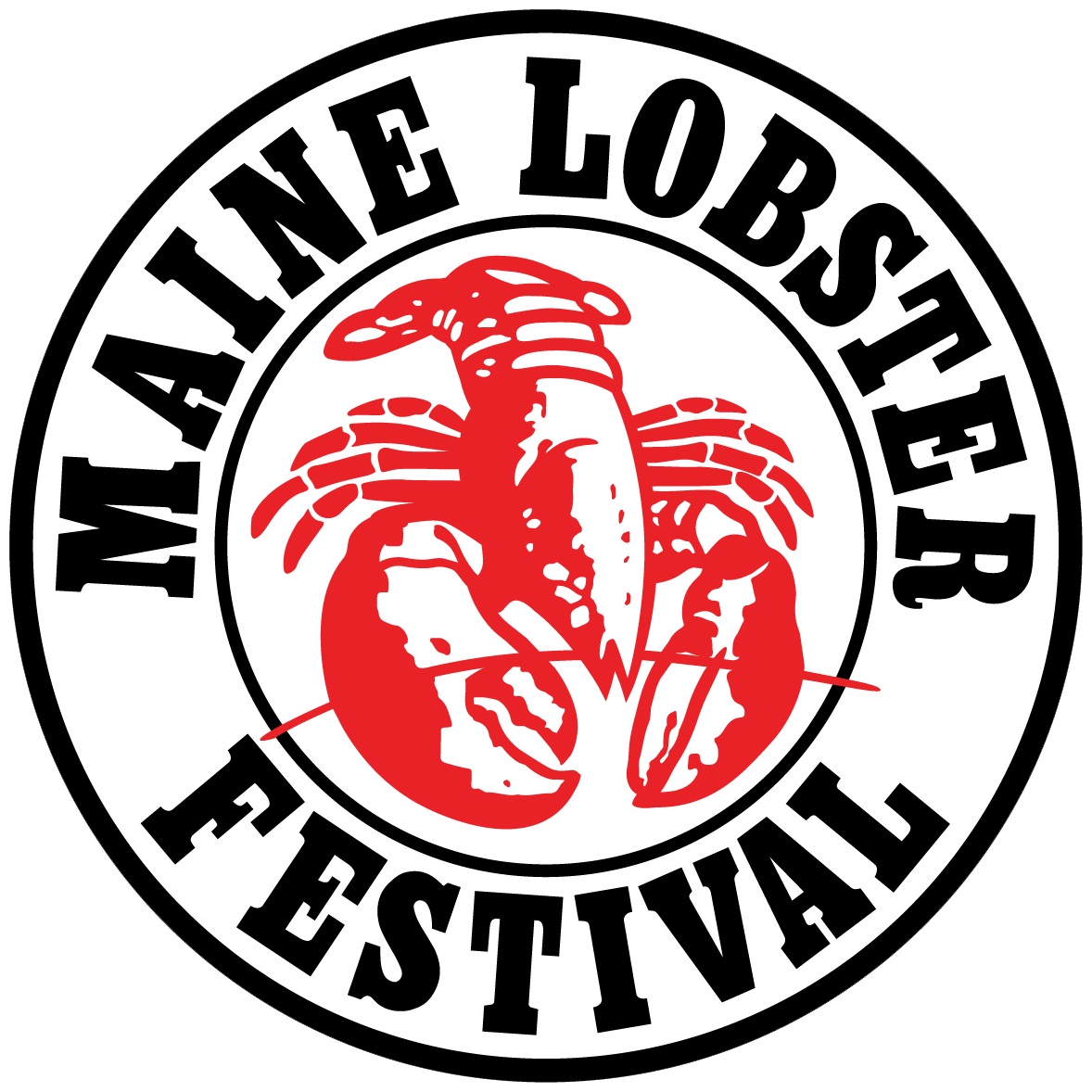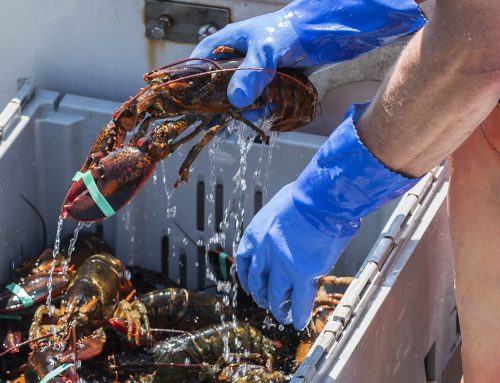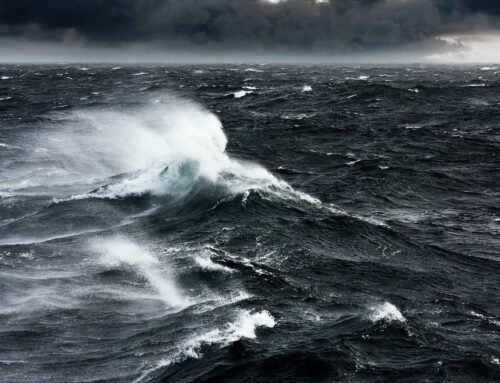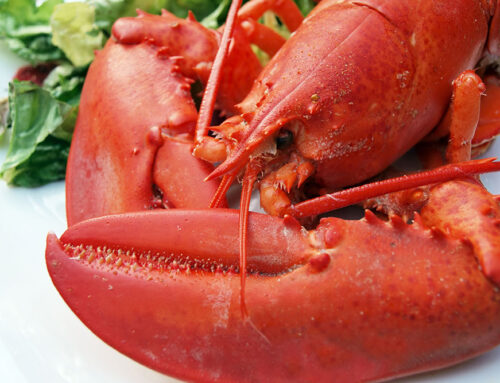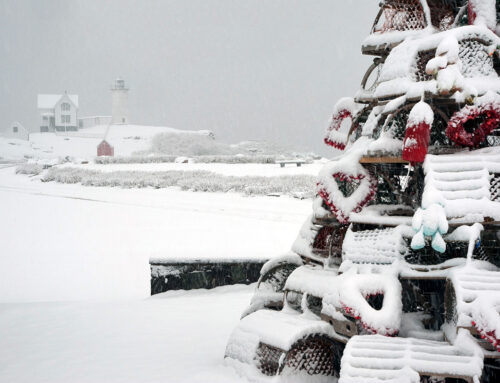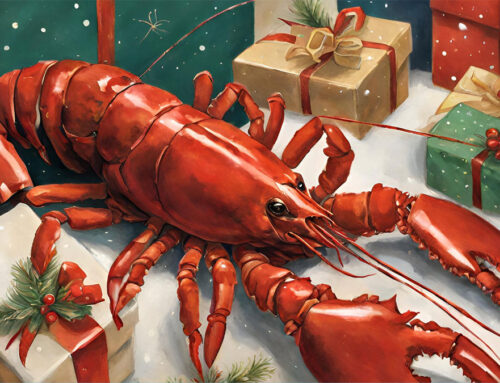There’s something about the American lobster (Homarus americanus), a crustacean species found on the Atlantic coast of North America, that gets people asking questions. A lot of questions!
Over the years we’ve heard most of them. Here are some of the most popular questions and fun facts about lobster.
What are the colors of lobsters?
When seeing them live for the first time, people often ask: “Why aren’t they red?” The (fun) fact is live lobsters are typically a mottled greenish brown to blackish brown, which helps conceal them on the ocean floor from predators. When they are cooked, the shell color, due to the change of proteins, changes to red. However, lobstermen have caught many a variegated color of lobster such as blue, yellow, calico—and dare we say it—yes, red, a genetic abnormality that occurs in one in 10 million cases. Read more in our past blog: The Rarest Colors of Lobsters
How do you tell male from female lobsters?
The best way to tell is to flip the lobster over and look at the lobster’s swimmerets. Male lobsters’ swimmerets tend to be hard and stiff where female lobsters’ swimmerets tend to be soft and feathery. Females also tend to have broader tails. Experienced lobstermen can instantly tell if a lobster is female by its V-notched tail. This is when lobstermen use a special tool to clip a “V” notch in the tail to indicate an egg-carrying female — a practice that the lobstermen used in the early 20th century to conserve the egg-bearing females in the ocean. And of course, if you turn it over and see a cluster of black eggs, that’s a sure sign she’s female. A female lobster can produce more than 20,000 eggs, which are affixed to its tail.
What do lobsters eat?
Apart from bait in traps, lobsters mainly like to catch fresh food, including fish, crabs, clams, mussels, sea urchins, and sometimes, because lobsters are cannibalistic, even other lobsters!
How do lobster traps work?
We actually have an entire blog post on that. The short answer is the modern lobster trap is a coated wire rectangular cage weighted down by four bricks. Various parts of the trap are named after parts of a house: the side head (entry), the kitchen, the mid-parlor, and the parlor. Each trap is equipped with escape vents, which allow the undersized lobsters to crawl out (a genius conservation effort invented by the earliest lobstermen). “Keepers,” or legal-sized lobsters which crawl into the trap, are captured by the tunneled netting that leads into smaller compartments (although, sometimes they are crafty and still escape).
How do you cook lobster?
Not surprisingly, we also have a detailed blog post on this topic as well, as there are different factors that warrant different cooking methods. People can either boil or steam lobsters, depending on quantity, time, and method of how the lobster is being served. We also have a blog post of important tips, such as taking the bands off the claws before cooking (important if you don’t want it to taste like rubber!), and how to get the most meat out when eating lobster.
We have a lot more lobster facts and tips in our past blogs, so check them out. The annual Maine Lobster Festival is taking place Aug. 2-6, 2023 with free admission once again! Get the jump on your travel plans and book your accommodations early. For more information: mainelobsterfestival.com
